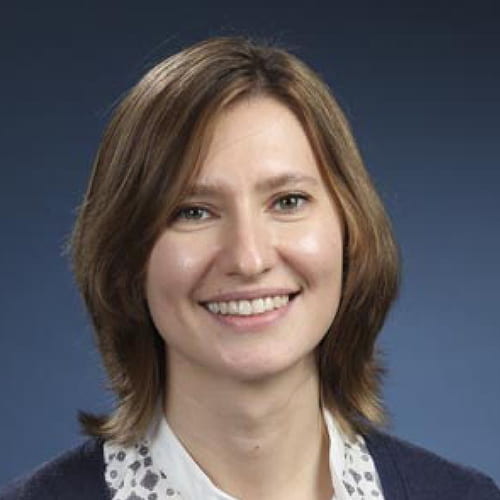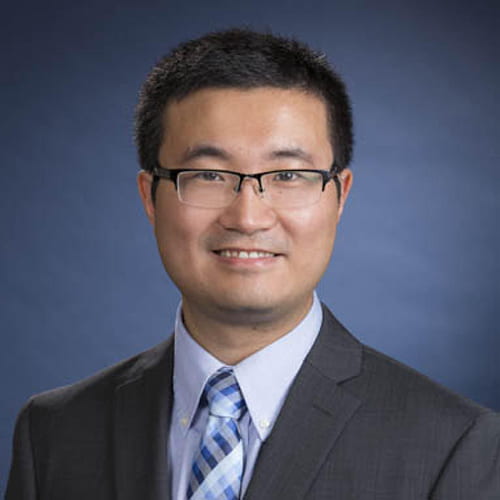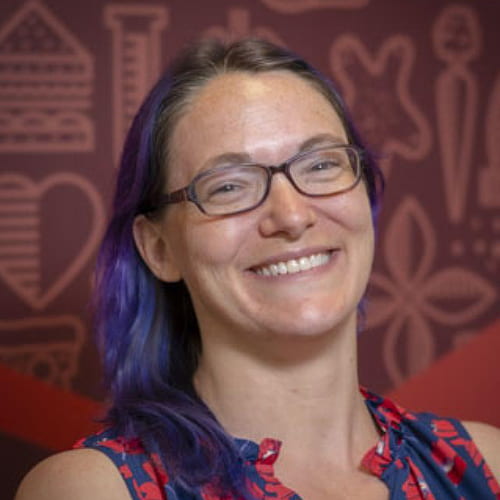Inspiring Innovation in Photonics
Valentin Gapontsev, who received an honorary doctor of engineering degree from WPI in 2001, was an internationally recognized physicist widely known as the “Father of the Fiber Laser Industry.” When he founded IPG Photonics in 1990, he combined his technical knowledge with his strategic vision for the potential uses of high-power fiber-optic lasers. Headquartered in Oxford, Mass., IPG is an internationally dominant manufacturer of laser equipment.
In 2001, with the burgeoning job market in photonics and the need for greater photonics research, Gapontsev began a long partnership and record of generous support with WPI. It started in Olin Hall with the establishment of the IPG Photonics Laboratory, a valuable academic resource for teaching photonics with emphasis on fibers, lasers, and detectors.
Over the years, the partnership between WPI and IPG has deepened. Dozens of WPI alumni are employed by IPG across the United States, and WPI and IPG collaborate on education, training, and workforce development. IPG, a participant in WPI career fairs, has also sponsored meaningful project experiences for students that benefit the company.
Bogdan VernescuThis fund will reward curiosity and enable WPI’s bold thinkers to pursue ideas with the potential for high reward as they use the data generated from this research to apply for larger grants.
Gapontsev passed away in October 2021, but his legacy lives on at WPI. The Gapontsev family has continued to support the university in critically important ways. In the face of Russia’s war against Ukraine, for example, the Gapontsev family has provided support for students affected by the war. Reflecting Valentin’s penchant for innovation and scientific discovery, the family recently established the Gapontsev Family Collaborative Venture Fund, with the goal of incentivizing, catalyzing, and inspiring interdisciplinary collaboration across the WPI enterprise with a special focus on photonics. The seed grants, awarded through a competitive process, will enable more successful research endeavors.
“This fund will reward curiosity and enable WPI’s bold thinkers to pursue ideas with the potential for high reward as they use the data generated from this research to apply for larger grants,” says Bogdan Vernescu, professor of mathematical sciences and vice provost for research. “We are grateful to the Gapontsev family for their support of our faculty and students. We are proud to honor the legacy of Valentin Gapontsev and his enduring commitment to the scientific community through this fund and the IPG Photonics Lab.”
“Our faculty aspire to be creators, scholars, and innovators who leverage our interdisciplinary research teams and novel approaches to make scientific discoveries in many areas of need including photonics,” adds Jean King, Peterson Family Dean of Arts & Sciences. “The Gapontsev Family Collaborative Venture Fund will allow them to do that with the speed and precision that is desperately needed to stay on the cutting edge of science and engineering. We would like to thank the Gapontsev Family for making an investment in our faculty and students.”
Six faculty were awarded Gapontsev seed grants last academic year to support three very different research projects that use photonics to push the boundaries of innovation, while also providing first-rate research opportunities for students.
“The importance of the Gapontsev Family Collaborative Venture Fund is centered on the support of fundamental research that enables new discoveries and the realization of cutting-edge technologies, along with the co-development of the next generation of scientists and engineers in a collaborative and interdisciplinary environment,” says Doug Petkie, professor of physics and Physics Department head. “These types of programs are essential for the region to remain strong economically through the generous support of innovative ideas led by the faculty and students at WPI.”
Unlocking the Potential of 2D Nanomaterials
Lyubov Titova, associate professor of physics, and her research partners Ronald Grimm, associate professor of chemistry and biochemistry, and Kateryna Friedman, research assistant professor of physics, used the seed grant to conduct studies on how 2D nanomaterials interact with light. These materials have individual layers as thin as one-millionth of a millimeter and have lateral dimensions that are thousands of times the thickness, Titova explains.
“Many of them have unique optical and electronic properties that are distinct from those of three-dimensional crystals. Our goal is to uncover those properties that are promising for new optical devices that operate in the visible and far infrared (terahertz) range of the spectrum,” Titova says. “The ultimate impact of this work will be new knowledge about optical properties of ultrathin, flexible, inexpensive 2D materials that can be integrated into photonics devices such as lasers, sensors, detectors, and light modulators for optical information processing.”

Lyubov Titova
The Gapontsev grant, she says, has been critical to the advancement of this research, supporting an undergraduate summer researcher and helping purchase supplies and parts needed to extend their experiments. The results of some of those experiments have been submitted to the 48th International Conference on Infrared, Millimeter and Terahertz Waves (IRMMW-THz) to be held in Montreal, Quebec, in September.
“We are honored by the award and extremely thankful for the opportunity to carry out this work,” Titova says. “On a more personal note, we are deeply touched by the Gapontsev family’s creating and supporting WPI Student Disaster Relief Fund & Gapontsev Family Support Fund to help students impacted by the war in Ukraine.” Two members of their team are Ukrainian: Kateryna Friedman’s undergraduate alma mater is Taras Shevchenko National University of Kyiv, and Lyubov Titova’s is The Precarpathian National University in Western Ukraine, not far from Lviv where Valentin Gapontsev studied.
“We have been profoundly impacted by the war, worried about family and friends in harm’s way. We also know how much this support meant for WPI’s Ukrainian undergraduate students.”
Detecting Foodborne Bacteria
From food poisoning to grocery recalls, foodborne bacteria impacts everyone. Yuxiang (Shawn) Liu, associate professor of mechanical engineering, and his co-PI Christopher Lambert, teaching professor of chemistry and biochemistry, are seeking a better way to help us avoid foodborne bacteria. The Gapontsev grant supports their research into a portable, rapid method for detecting foodborne bacteria in the field.
Foodborne bacteria play a big role in food contamination, Liu explains, and can result in foodborne outbreaks, recalls, sickness, and even death. Complicating the issue, he says, contamination can happen anywhere along the supply chain from farm to table.

Yuxiang Liu
According to Liu, “Currently the gold standard detection method for foodborne bacteria still relies on bacteria plating, which requires equipment in a testing center and generally 24 to 48 hours to obtain the results. In short, current testing methods are limited in locations and in response time.” Importantly, this also limits how quickly and efficiently communities can react to an outbreak.
Liu and Lambert envision a foodborne bacteria detection device that can provide results at any location point, as well as a detection patch included in food packaging to warn whenever contaminants are present. This technology would enable anyone with little training to determine the biosafety level of foods within a few hours, Liu explains.
Lambert adds that everyone can benefit from reduced foodborne outbreaks—people in resource-limited areas to soldiers on the battlefield—and this technology could be applied to any bacteria, not just foodborne bacteria.
“The general support of the Gapontsev Fund provides an opportunity for us to prove the concept of this idea, and the preliminary data will significantly enhance our chances to obtain major funding support from federal agencies.”
“We deeply appreciate your kind support of our research, and your support is essential for us to push forward this idea to eventually benefit the masses in the future,” Liu says of the Gapontsev family’s support.
Using Light to Deliver Lifesaving Drug Treatments
“I have been working in drug delivery since my first research experience in 2004,” says Jeannine Coburn, associate professor of biomedical engineering. “I am always exploring new ways to deliver drugs using biomaterials.”
Coburn’s team at WPI’s Functional Biomaterials Lab develops drug delivery systems for cancer treatment. The Gapontsev grant supports Coburn’s collaboration with Titova and the members of the Ultrafast Terahertz and Optical Spectroscopy Lab “to open up the potential of using light to study our drug delivery systems and engineering novel strategies to improve cancer treatment.”
“We are using light-material interaction to uncover this fundamental knowledge,” Coburn says.

Jeannine Coburn
Importantly, she adds, the Gapontsev award has enabled several meaningful research experiences for undergraduate and graduate students. These students received training on specialized equipment, learned lab techniques, and identified their own research interests. One student, thanks in part to this experience, has been accepted to a PhD program at the University of Colorado, Boulder.
“We are grateful to the Gapontsev family for providing the funding for this project. It supports our collaboration, not only financially but with protected time, across multiple disciplines, which is truly where innovation occurs,” Coburn says.




Reader Comments
0 Comments